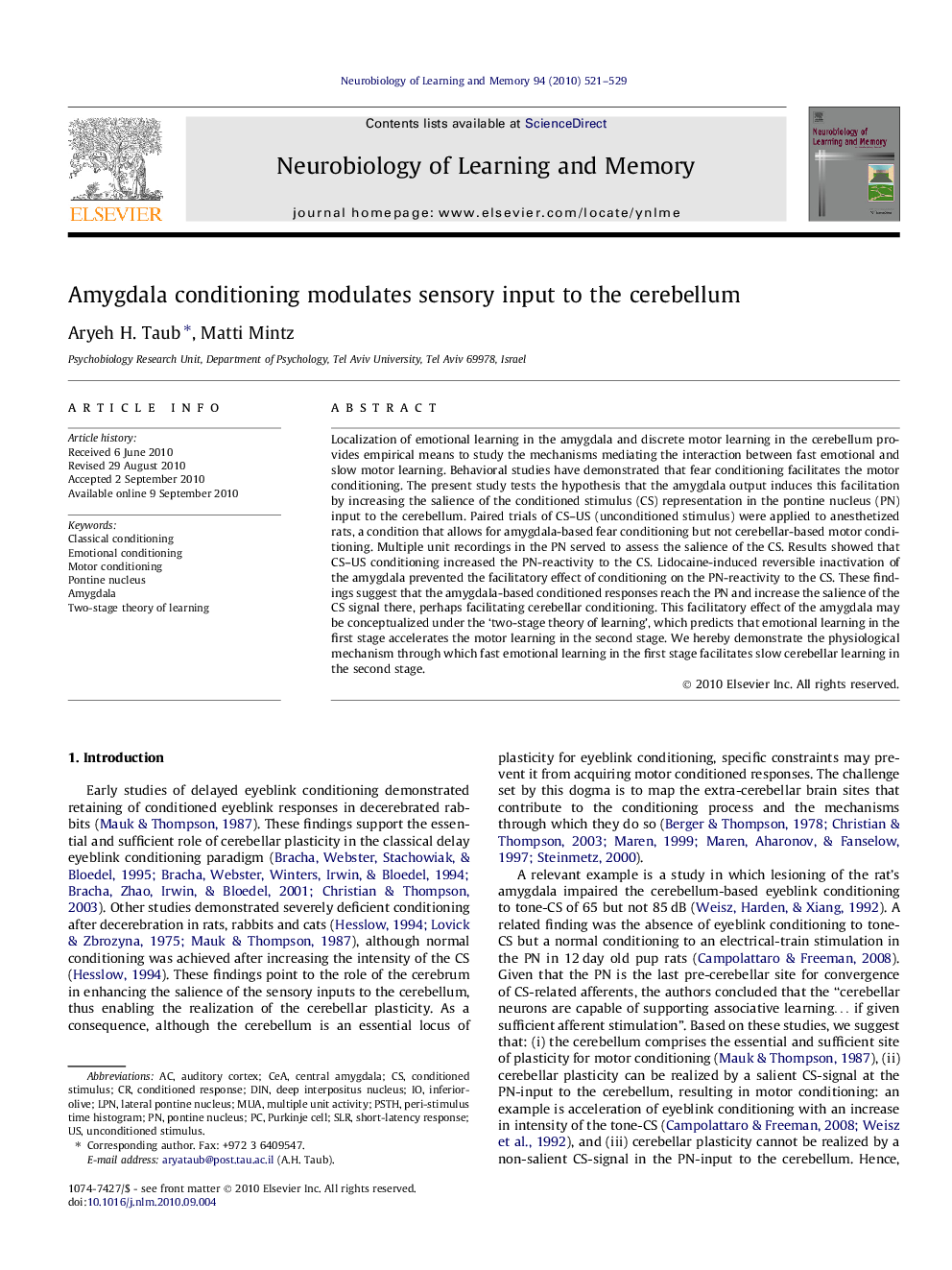| کد مقاله | کد نشریه | سال انتشار | مقاله انگلیسی | نسخه تمام متن |
|---|---|---|---|---|
| 936835 | 1475193 | 2010 | 9 صفحه PDF | دانلود رایگان |

Localization of emotional learning in the amygdala and discrete motor learning in the cerebellum provides empirical means to study the mechanisms mediating the interaction between fast emotional and slow motor learning. Behavioral studies have demonstrated that fear conditioning facilitates the motor conditioning. The present study tests the hypothesis that the amygdala output induces this facilitation by increasing the salience of the conditioned stimulus (CS) representation in the pontine nucleus (PN) input to the cerebellum. Paired trials of CS–US (unconditioned stimulus) were applied to anesthetized rats, a condition that allows for amygdala-based fear conditioning but not cerebellar-based motor conditioning. Multiple unit recordings in the PN served to assess the salience of the CS. Results showed that CS–US conditioning increased the PN-reactivity to the CS. Lidocaine-induced reversible inactivation of the amygdala prevented the facilitatory effect of conditioning on the PN-reactivity to the CS. These findings suggest that the amygdala-based conditioned responses reach the PN and increase the salience of the CS signal there, perhaps facilitating cerebellar conditioning. This facilitatory effect of the amygdala may be conceptualized under the ‘two-stage theory of learning’, which predicts that emotional learning in the first stage accelerates the motor learning in the second stage. We hereby demonstrate the physiological mechanism through which fast emotional learning in the first stage facilitates slow cerebellar learning in the second stage.
Research highlights
► The present study tests the hypothesis that the amygdala output can facilitate cerebellar conditioning by increasing the salience of the conditioned stimulus (CS) representation in the pontine nucleus (PN) input to the cerebellum.
► The results show increased PN-reactivity to tone-CS following CS–US conditioning in anesthetized rats.
► The increased PN-reactivity was abolished by pre-conditioning lidocaine-induced inactivation of the amygdala.
► The results suggest that, fast amygdala-conditioning can support cerebellar conditioning by increasing the saliency of low-intensity CS.
Journal: Neurobiology of Learning and Memory - Volume 94, Issue 4, November 2010, Pages 521–529